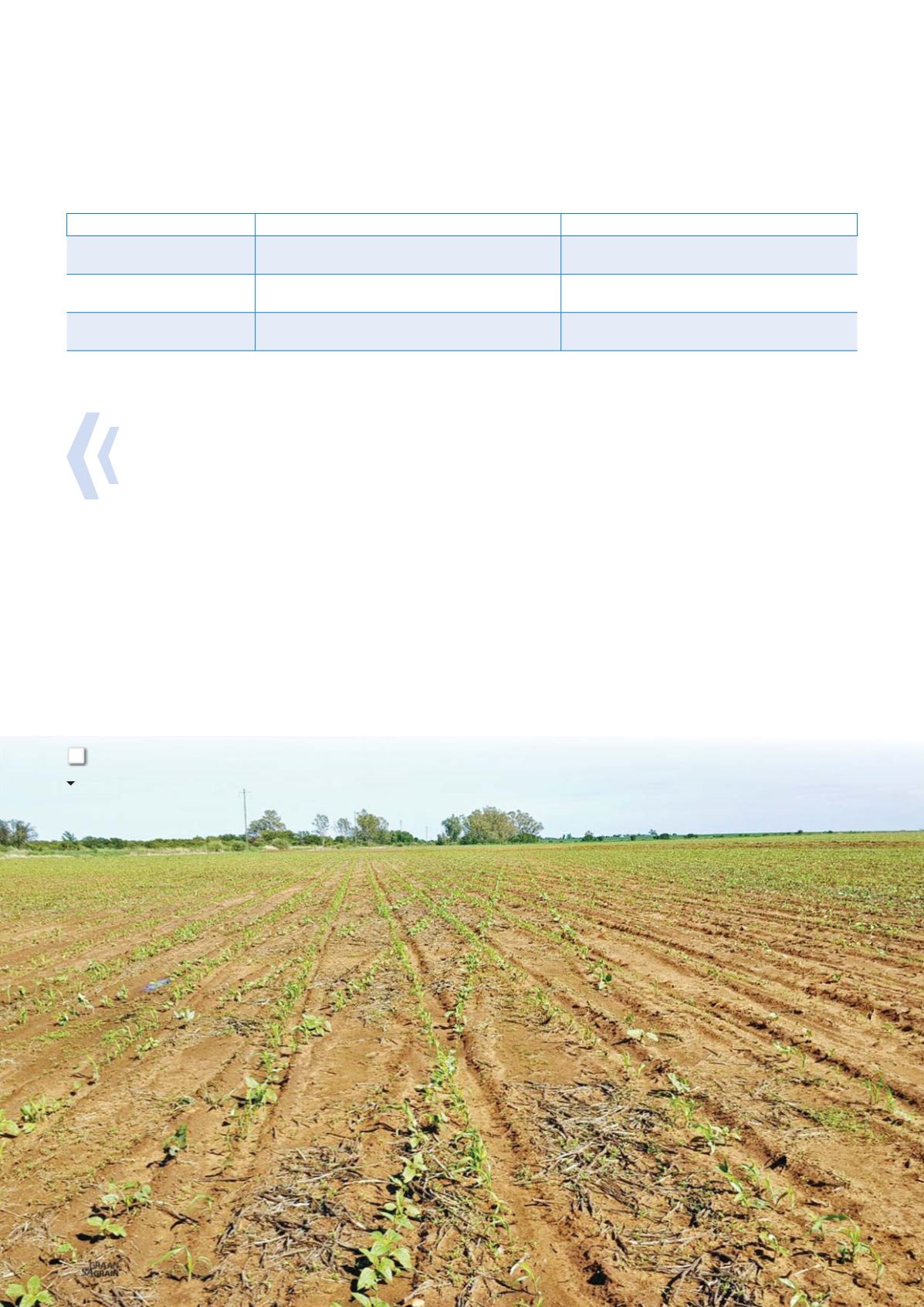

According to Kristine Nichols, a soil ecolo-
gist from the USA, grain crops do not pro-
duce that much photosynthetic exudates,
also called liquid carbon, to feed soil mi-
crobes. When grain crops become repro-
ductive, root exudates shut off as the plant
shunts resources into seed production.
So there is only a four to five-week period
when plants push exudates into the soil.
This is not sufficient and therefore grain
production doesn’t contribute much to the
build-up of soil carbon.
Past practices of agrochemical use and high
rates of inorganic fertiliser could also have
negatively impacted on soil microorgan-
isms’ diversity and function. Could we rec-
tify these challenges by planting a diverse
summer mixture and utilising it with live-
stock?
The theory
By using high density, low frequency graz-
ing to utilise the summer mixture we are
trying to restore our soil carbon stock in the
soil. The above ground chewing, tearing and
trampling actions by grazers create wounds
that the plants must heal.
But the plants can’t do this alone. They need
micronutrients and microbial metabolites
and this co-operation is achieved by pump-
ing a steady supply of carbon rich exudates
from their roots to recruit microbial assis-
tants providing the roots with nutrients.
By letting livestock graze half of the crop
biomass available, the diverse sward will re-
grow. Livestock manure also contains more
humic substances than plant residues. Dung
beetles and saprophytic fungi can feed on
this nutrient rich matter and help recycle el-
ements back into the soil. This carbon will
eventually become part of the more resist-
ant, stable carbon pool, also called humus
or ‘the very dead’ soil organic matter.
By planting fodder crops, nutrients deep in
the soil are returned (recycled) to the sur-
face and placed back into biological circula-
tion. The mulch left on the surface will upon
decaying release plant accessible nutrients
back to the soil to be used by subsequent
crops. By not using excessive amounts of
CA
:
Enhancing soil health
FUNCTIONAL GROUP
FUNCTION
REPRESENTATIVE MEMBERS
Chemical engineers
Regulate 90% of energy flow and stimulate plant
growth; make antibodies
Bacteria and fungi
Biological regulators
Regulate populations of soil organisms, through
grazing, predation or parasitism
Protozoa and small invertebrates, such as nema-
todes, pot worms, springtails and mites
Ecosystem engineers
From pore network and bio-structures, aid in ag-
gregation and particle/microbial transport
Plant roots, earthworms, invertebrates including
millipedes, centipedes, beetles, caterpillars, etc.
TABLE 1: SOIL ECOSYSTEMS FUNCTION OF SOIL ORGANIC MATTER.
November 2018
42
2: Cover crops establishing successfully.
2
Adapted from Moore Kucera (2016)
















